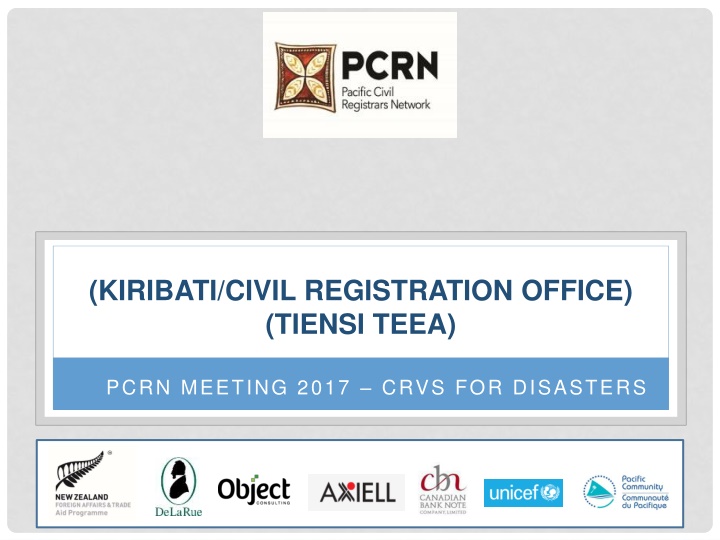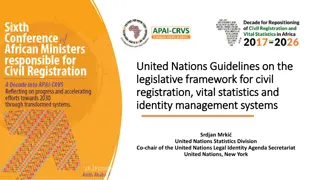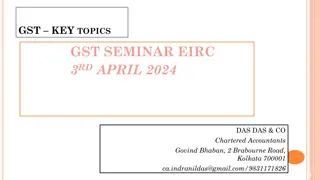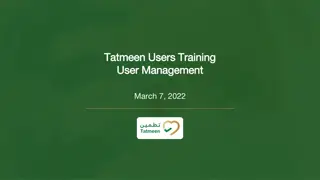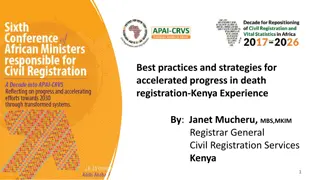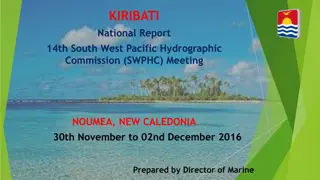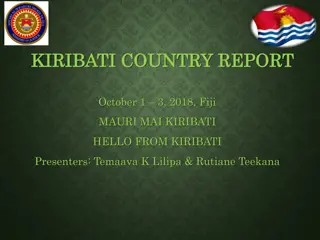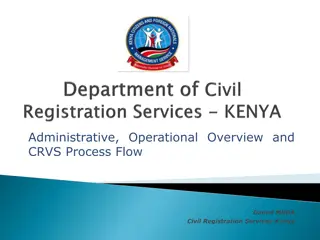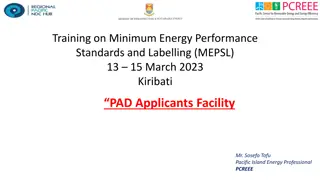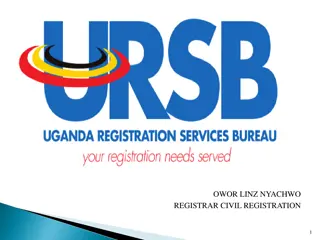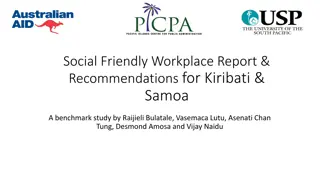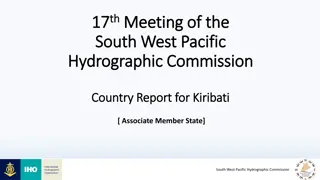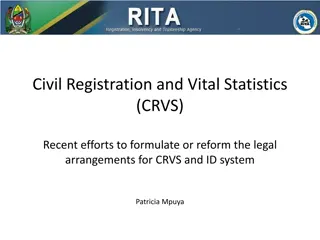Kiribati Civil Registration Office Overview
Kiribati, Civil Registration, CRVS, Data Storage, Challenges
Uploaded on Feb 23, 2025 | 0 Views
Download Presentation

Please find below an Image/Link to download the presentation.
The content on the website is provided AS IS for your information and personal use only. It may not be sold, licensed, or shared on other websites without obtaining consent from the author.If you encounter any issues during the download, it is possible that the publisher has removed the file from their server.
You are allowed to download the files provided on this website for personal or commercial use, subject to the condition that they are used lawfully. All files are the property of their respective owners.
The content on the website is provided AS IS for your information and personal use only. It may not be sold, licensed, or shared on other websites without obtaining consent from the author.
E N D
Presentation Transcript
(KIRIBATI/CIVIL REGISTRATION OFFICE) (TIENSI TEEA) PCRN MEETING 2017 CRVS FOR DISASTERS https://encrypted-tbn1.gstatic.com/images?q=tbn:ANd9GcTqyULz4iedKjR5uCCa6tfQkd80Tmt24kvK_0Lr6I-GFdsKi-KNYKACpQ Image result for spc Object Consulting Software development for large-scale business applications, Sydney, Melbourne Australia
OVERVIEW Birth Registration is estimated to be: 90.8 % complete within 1 year of birth under 1year in 2016. (2418/2663(est pop 2016) 90.8 % of the total population is estimated to have had their birth registered Birth certificates are provided for all births- which is free of charge Death Registration is estimated to be: 5.4% complete within 4 year of death ( 0-4years)=35/641 Cause of death (from a medical certificate) is provided for 5.4 % of all deaths [CRVS was coordinated by Ministry of Justice through Civil Registration office working with National statistic office and Health information Unit, roles such as oversee and implement an annual workplan and report progress, provide coordination btw government sectors and NGOs (TOR) and country targets and goals was identified and aligned with Regional Action Framework. ( refer to next slide)
CRVS GOALS AND TARGET 1.1 Goal 1: Universal civil registration of births and deaths The targets for Goal 1 as set by Kiribati are: By 2024, at least 100 % of births in the territory and jurisdiction in the given year are registered. By 2024, at least 100 % of children under five years old in the territory and jurisdiction have had their birth registered. By 2024, at least 100 % of all individuals in the territory and jurisdiction have had their birth registered. By 2024, at least 95 % of all deaths that take place in the territory and jurisdiction in the given year are registered. By 2024, at least 80 % of all deaths recorded by the health sector in the territory and jurisdiction in the given year have a medically certified cause of death recorded using the international form of the death certificate.
DATA STORAGE AND PROTECTION On this slide briefly describe Where CR data is stored (at the central or main office) How records are stored Electronic, Register books and paper records Whether data is backed up/ protected on hard drive and External drive. How often the back up is done. it done regularly
MAJOR CHALLENGES FOR CRVS (PRE AND POST DISASTER) Pick 2 key challenges that you have identified as priorities in your system planning i.e. legislation updates, need to improve data sharing, access to registration. Need to improve data sharing and access to registration- it an issue as we still experience late birth registration and untimely reporting on events and rely on family to make reporting. And note if there are special considerations pre or post disaster (there is no activity was plan on disaster but it essential and good idea to develop plan prior disaster. Note if there are activities occurring to address this issue- mobile birth registration, strengthen collaboration with Ministry of Health and ASWO have been recruited as officers to work on Civil registration work, providing with Outer islands set of computer and laptop to upgrade work process more fast and easy and training officers and nurses on birth notification in hospital. 2 officers permanently working within main hospitals in central island ( South Tarawa) o o o
DISASTER SCALE UP Describe BRIEFLY how your operation would cope with registration needs following a disaster. Registration of births and deaths process was still rely on the family to make reporting to the Civil registry office, which results some events are under reporting and low coverage of births and deaths including cause of deaths. Reporting is delaying and accessibility to services especially on registration and issue out certificate is more critical during the disaster, so linking with Health is important including the ICT need to be develop to transmit data from Health to the Civil Registry office. As the MOU has been signed between two ministries, partnership need to be strong and strengthen to ensure all data are reporting in a timely manner and no one will be neglected. What do you see as the major challenges in your country to providing registration following a disaster. Record are lost or missing, late birth registration involving false information and accessibility or reporting is more harder than normal
